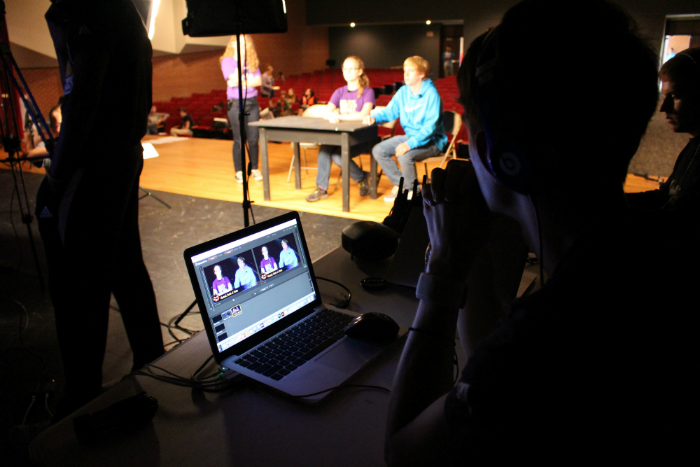
The Henderson, Neb., company has expanded to 66 schools in three years.
Taylor Siebert, CEO of Striv, is what some people call a “boomerang” — someone who grew up in Nebraska, left the state and then came back.
“I got my degree from Doane and wanted to get out of Nebraska,” Siebert said. “I made my new wife move to Colorado and got a sales job. I knew I needed experience but always wanted to start something. After two years we moved back to Lincoln. I got into tech through working with web sites and social media, and figured out that’s my passion.”
In 2010, Siebert moved to Henderson, a community of just under 1,000 in east-central Nebraska. It was there the foundation for Striv began to develop.
“I started heartlandbeat.com, doing stories about the community and school,” Siebert said. “We got approval from the school board in 2011 to live stream school events. We streamed for a year and discovered there was not much out there for schools.”
BECOME A SPONSOR
Join us in championing the narrative of success, resilience, and ingenuity that defines Nebraska’s startup community. Learn more »
Siebert launched Striv in early 2012 with a pricing model for schools, and quickly discovered that the spring was a bad time to reach that market.
“They wouldn’t even take a meeting until summer,” Siebert said.
The “aha” moment
The first six schools were signed up in the summer of 2012. The next challenge was to figure out how to get schools to stream their own events since Striv didn’t have the capacity to do it themselves.
The “aha” moment was the decision to make Striv an educational experience.
“That’s when I could see the vision,” Siebert said. “If we trained teachers and students, they could stream their own events. Students are fully capable of doing that.”
But wait, there’s more.
“We not only come in and train, but we create a class and curriculum around content and media,” Siebert said. “They bought into that. We’ve just facilitated the process by helping schools share their stories online.”
Gaining growth
Striv has grown their market share by a factor of 10, from the original 6 to 66 schools across Nebraska today. Are there plans to scale further geographically? Maybe, but not necessarily.
“Being a local company with a face has proven to be a good thing,” Siebert said. “I can drive to Hemingford or Falls City, get in the classroom and train.”
“It also makes it easier for students and teachers to attend our annual ‘StrivU LIVE’ conference,” Siebert said. The conference drew about 200 in 2015.
“It’s great to get students together with kids from other schools,” Siebert said. “It provides hands-on experience with equipment that students don’t normally work with.”
I was seeing what was going on in Lincoln and Omaha and wanted to raise a bunch of money
It’s a technology-based program that ultimately draws students closer to their community.
“We also place a lot of emphasis on social media,” he said. “With Striv, they are not only streaming but also ramping up on Twitter and Facebook. They’re learning how to connect with their community. Kids that didn’t have this opportunity before are now finding their passion.”
Is it all about sporting events?
“Sports drives viewership,” Siebert said. “But when a school streams a pep rally, graduation, concert or Veteran’s Day event, the audience is smaller but crucial.”
Expanding to mobile
Striv is nearing launch of their first mobile app.
“It will be a simple app to start,” Siebert said. “One focus will be push notifications when a school starts a stream.”
What has Siebert learned through Striv?
“Slow growth is fine with me,” Siebert said. “At first I was seeing what was going on in Lincoln and Omaha and wanted to go out and raise a bunch of money. But that’s not why I started the business. We’re very lean, and our vision and purpose is to serve schools in Nebraska, and our customers appreciate that. If you’re going into something, focus on service instead of selling.”
—
Rod Armstrong is Vice President of Strategic Partnerships for AIM in Lincoln, Nebraska. He is a regular contributor to Silicon Prairie News.



